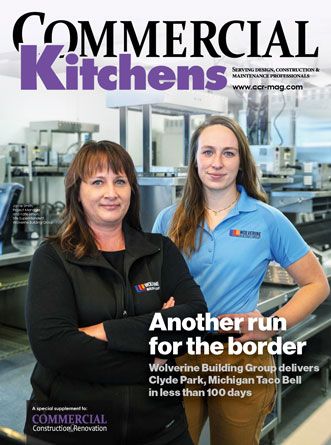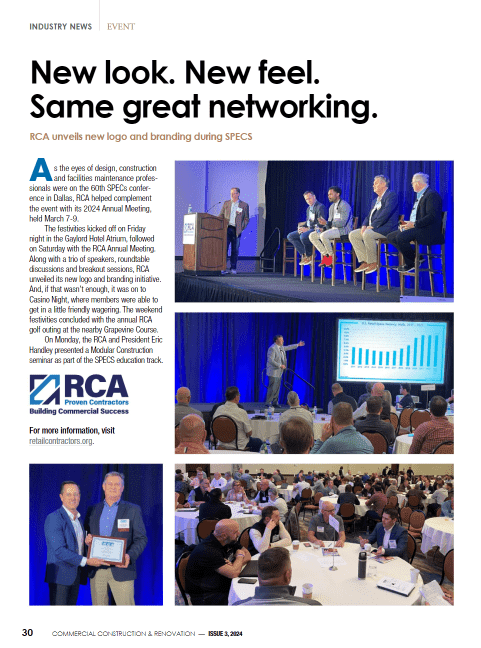Large commercial and industrial facilities like storage facilities, warehouses, gymnasiums, and factories need high-intensity lighting fixtures to achieve perfect illumination.
Conventional options like fluorescent T5 or metal halide fixtures are unable to offer superior lighting quality like LEDs. Further, they contain toxic materials like mercury and are highly energy inefficient. Industry experts like LED Lighting Supply consider LED high bay lights an ideal replacement for fluorescents and other traditional lights.
LED high bay lights are designed for open spaces with 20 to 45+ feet tall ceilings. Aspects like superior quality designs, high lumen output and low power consumption make LEDs ideal for commercial applications.
From offering well-balanced lighting dispersed over a wide area to a sharp focus on the crucial areas, LEDs can meet all types of lighting needs.
If you are planning to renovate the interiors of your facility, investing in LED high bay lights is a smart decision.
In this post, you will find six tips that’ll help you select the best high bay lights to illuminate your commercial facility.
#1: Determine the Number of Lights the Layout Needs
Analyzing the layout is vital to select, install, and achieve the desired lighting effect with LED high bay lights.
The brightness of LED bay lights depends on the foot-candle (FC), which is the unit to measure illuminance. The unit implies the intensity of light from a distance of one foot from the source. So, calculating layout dimensions can help you gauge the total number of lights required for illuminating the entire structure.
For instance, a warehouse may need 30-50 FC to achieve sufficient luminosity whereas, a gymnasium may need around 40-70 FC to illuminate the playing surface.
If it seems overwhelming, contact a trustworthy LED high bay light provider. Professionals can create a custom plan that fits your budget, thereby helping you achieve the desired fluorescence indoors.
#2: Zero Down on a Suitable Watt and Lumen
Lumen indicates the total amount of light emitted by a source, while watt signifies the energy required to produce it. So, your goal should be to choose energy-efficient LED high bay light fixtures that emit more lumens while consuming less power.
Simply put, the wattage of LEDs should be less, and the lumens, high.
What should be the percentage of lumens?
The answer varies according to your indoor facility’s height. The higher the ceiling the more lumens you’ll need to achieve the desired luminous efficiency.
Here’s an approximate calculation to refer to.
- 10-15 feet ceiling: 10K-15K lumens
- 15-25 feet ceiling: 16K-25K lumens
- 30-35 feet ceiling: 36K-50K lumens
#3: Invest in Lighting That Will Minimize Your Carbon Footprint
Research shows that LEDs use 60-70% less energy than metal halide lighting and 60% less than fluorescents.
This makes LEDs a sustainable and energy-efficient option for lighting commercial facilities. However, not all LEDs have the same luminous efficacy and hence need a quality inspection before installation.
The luminous efficacy of LEDs indicates their effectiveness in converting electricity into visible light. LEDs with high luminous efficacy consume less energy and thus are ideal for industrial facilities. Although they come with high upfront costs their low energy consumption attribute can save money in the long term.
Whereas, LED high bay lights with lower efficacy are cost-effective, their high energy consumption makes them a poor choice for long-term use.
Most importantly, LEDs don’t contain toxic materials that are harmful to the environment. You can forget about the costly recycling of these bulbs. Hence, opting for high efficacy LED high bay lights is a wise decision to ensure reduced carbon footprint and electricity bills.
#4: Understand Your Voltage Needs
Commercial and industrial setups need high voltage fixtures ranging from 100 to 480 volts to save inherent energy losses caused while the electricity flows from one location to the next.
That being said, every zone in your commercial facility needs a different voltage supply.
For instance, consider a large warehouse with a Wi-Fi-equipped office and several storage rooms.
Typical driver options are grouped in 100-277V and 277-480V. As the internal zones of your indoor facility have unique power requirements, they need individual drivers for switching to incoming voltages.
LED high bays offer multiple drivers which can auto-adjust their voltage range as per the incoming power. So, you don’t need to set the voltages during the installation.
#5: Ensure Your LEDs Have the Right Color Temperature
Color temperature denotes the tint produced by the lighting and hence can make or break the ambiance of the indoor facility.
What’s more?
A study states that color temperatures can impact cognitive performance. For instance, harsh color temperatures can lead to headaches or severe eye strain, thereby affecting your routine activities.
On the other hand, the subtle color temperatures may fail to create the lighting effect needed for commercial spaces.
What color temperature is suitable for commercial facilities?
Color temperatures need to be warm but not extremely harsh. As per leading industry professionals, color temperatures between 4000-5000 Kelvins can create the perfect ambiance without causing any ill effects on the body and hence should be installed for commercial facilities.
#6: Inspect CRI for Ensuring High-Quality Lighting
Color Rendering Index (CRI) is the capability of a lighting source to reflect the actual colors of objects and is thus a crucial aspect for selecting LED high bay lights.
With high-CRI LED high bay lighting, the colors and textures of objects stand out, producing a natural light-like radiance. On the other hand, low-CRI LEDs deliver faded and dull colors.
The CRI can be calculated by measuring the chromaticities’ difference between LEDs and a reference light, usually natural daylight. The smaller the difference in chromaticities, the higher the CRI.
If your facility has tall ceilings, a CRI of 70-90 can be apt to achieve the perfect illumination. So, consider high CRI LED high bay lights for a smooth transition.
Conclusion
Whether you manage a gymnasium, retail space, or warehouse, selecting the right LED high bay lights can be a game-changer for your facility.
Start with creating a lighting plan to get all the essentials correct. Consider your voltage needs, CRI, color temperature, lumens, watts, and energy usage before making any design decisions.
A systematic approach can help you achieve the perfect illumination, thereby transforming your facility into a welcoming and warm space.
Author Bio:Cory Peterson is Director of Sales & Marketing at LED Lighting Supply where he focuses on improving customer experience and revenue operations. Cory writes about commercial & industrial lighting, along with topics important to contractors and facility managers. In his free time, Cory enjoys traveling, snorkeling, exercise and cooking.







 The 2024 virtual Men’s Round Table will be held Q4, 2024, date TBD.
The 2024 virtual Men’s Round Table will be held Q4, 2024, date TBD.











